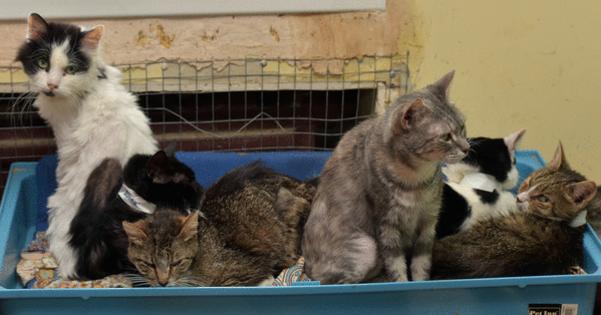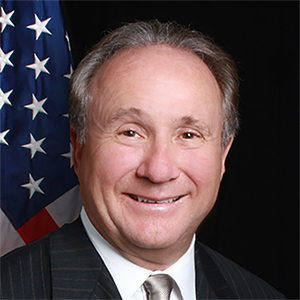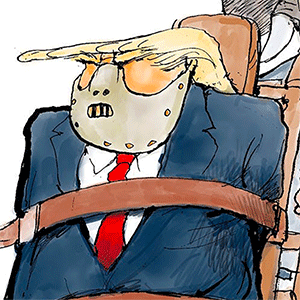Commentary: Animal hoarding is on the rise, and 'no-kill' policies are making it worse
Published in Op Eds
Trapped in a living nightmare, a cat named Lilly suffered for months with an untreated, excruciatingly painful perforated cornea, until she finally died. She was just one of many. Hundreds of others perished or “lived” in urine-soaked outbuildings or outdoors amid vomit, trash, excrement, roaches and maggots. The most shocking part? This happened at a self-proclaimed “cat rescue sanctuary.”
Within the past year, cases of animal hoarding have surfaced across the country, revealing hundreds, sometimes thousands, of neglected animals trapped in filth and deprivation. Hoarding is on the rise, and the push for “no-kill” shelter policies is fueling this crisis.
Facilities that become fixated on making their “live release” rates look good often refuse to accept animals, including those who are elderly, ill or aggressive, to keep their euthanasia numbers low. When shelters turn animals away, they don’t just disappear. Many wind up dumped on the streets, where they suffer and die slowly and in pain. Others are handed over to hoarders, many of them posing as “rescues.”
These sinister operations promote themselves as saviors, running self-described “sanctuaries” or “safe havens.” They trick people (including donors) into believing they are helping animals, when in reality, they are severely neglecting and abusing animals and pocketing the cash. Some hoarders are certifiably mentally ill and have what can only be called an addiction to acquiring animals. Both scenarios mean the same thing for animals: horrific suffering and death.
Disturbingly, animal shelters are often the ones supplying hoarders with victims. At a self-described animal “hospice” in New York, animals sat in urine-soaked diapers, while paralyzed dogs dragged themselves across the floor. An elderly Chihuahua named Malcolm suffered for weeks before he died. He was sent to this hellhole by a publicly funded animal shelter in New York City under pressure to be “no-kill.”
Many shelters with “no-kill” policies also enable hoarders by refusing to rescue animals from them. In Michigan, for example, an animal control officer openly admitted to ignoring multiple suffering animals because the shelter had “no room” for them. Shelters that are obsessed with boasting their “no-kill” status are perpetually full because they warehouse animals in cages for months or years in order to avoid euthanasia. Ironically, these shelters hoard animals themselves, while also leaving other animals to suffer agonizing, lonely deaths at the hands of known hoarders and abusers.
Hoarded animals are commonly deprived of basic veterinary care and languish with untreated illnesses and infections. Injuries—including broken bones and wounds sustained in fights with other animals—go untreated. Many of these animals are not spayed or neutered, so they reproduce uncontrollably or are separated and confined to small cages or locked in bathrooms. The behavioral issues resulting from extreme physical and psychological neglect virtually erase these animals’ chances of rehabilitation and adoption, and untold numbers die without a thought from their “rescuers.”
Ending the nightmare of animal hoarding must involve addressing all the factors that allow it to flourish. Authorities must take immediate action when hoarding is reported instead of leaving animals to suffer. Hoarders must face legal consequences, permanent bans on owning animals and routine home inspections to ensure compliance. And above all, shelters must accept every animal.
We can all make a difference. Start by speaking out against dangerous “no-kill” policies and demanding oversight of the unregulated “rescue” industry. And if you know of or suspect an animal hoarding situation, report it. Warning signs include dilapidated homes with overgrown yards that reek of waste and decay. You may hear dogs barking inside or see many cats sitting in the windows. Multiple cats roaming the property and dogs chained outside are common in hoarding situations. It is better to report nothing than ignore something.
We must stop allowing “rescues” to hoard and harm those they claim to protect.
____
Melissa Rae Sanger is a licensed veterinary technician and a staff writer for the PETA Foundation, 501 Front St., Norfolk, VA 23510; www.PETA.org.
___
©2025 Tribune Content Agency, LLC.




























































Comments